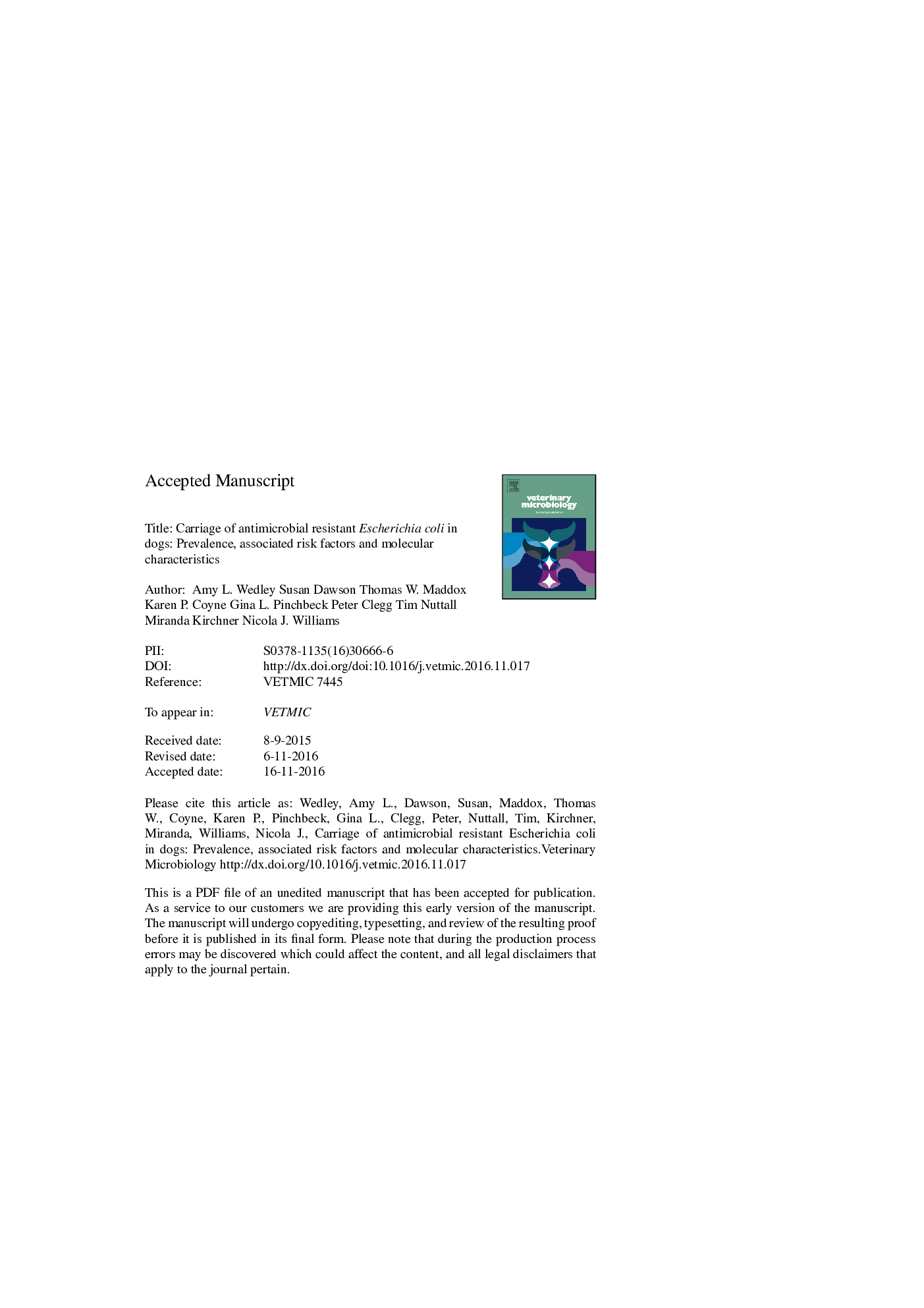| کد مقاله | کد نشریه | سال انتشار | مقاله انگلیسی | نسخه تمام متن |
|---|---|---|---|---|
| 5545409 | 1555324 | 2017 | 28 صفحه PDF | دانلود رایگان |
عنوان انگلیسی مقاله ISI
Carriage of antimicrobial resistant Escherichia coli in dogs: Prevalence, associated risk factors and molecular characteristics
ترجمه فارسی عنوان
حمل اسمیریچایکلی مقاوم به ضد میکروبی در سگ ها: شیوع، عوامل خطر مرتبط و ویژگی های مولکولی
دانلود مقاله + سفارش ترجمه
دانلود مقاله ISI انگلیسی
رایگان برای ایرانیان
کلمات کلیدی
موضوعات مرتبط
علوم زیستی و بیوفناوری
علوم کشاورزی و بیولوژیک
علوم دامی و جانورشناسی
چکیده انگلیسی
Resistance to antimicrobials, in particular that mediated by extended spectrum β-lactamases (ESBL) and AmpC β-lactamases are frequently reported in bacteria causing canine disease as well as in commensal bacteria, which could be a potential health risk for humans they come into contact with. This cross-sectional study aimed to estimate the prevalence and investigate the molecular characteristics of ESBL and plasmid encoded AmpC (pAmpC)-producing E. coli in the mainland UK vet-visiting canine population and, using responses from detailed questionnaires identify factors associated with their carriage. Faecal samples were cultured for antimicrobial resistant (AMR), ESBL and pAmpC-producing E. coli. A subset of ESBL and pAmpC-producing isolates were subjected to multi-locus sequence typing and DNA microarray analyses. Multivariable logistic regression analysis was used to construct models to identify risk factors associated with multidrug resistant (MDR, resistance to three or more antimicrobial classes), fluoroquinolone resistant, ESBL and AmpC-producing E. coli. AMR E.coli were isolated from 44.8% (n = 260) of samples, with 1.9% and 7.1% of samples carrying ESBL and pAmpC-producing E. coli, respectively. MDR E. coli were identified in 18.3% of samples. Recent use of antimicrobials and being fed raw poultry were both identified as risk factors in the outcomes investigated. A number of virulence and resistance genes were identified, including genes associated with extra-intestinal and enteropathogenic E. coli genotypes. Considering the close contact that people have with dogs, the high levels of AMR E. coli in canine faeces may be a potential reservoir of AMR bacteria or resistance determinants.
ناشر
Database: Elsevier - ScienceDirect (ساینس دایرکت)
Journal: Veterinary Microbiology - Volume 199, February 2017, Pages 23-30
Journal: Veterinary Microbiology - Volume 199, February 2017, Pages 23-30
نویسندگان
Amy L. Wedley, Susan Dawson, Thomas W. Maddox, Karen P. Coyne, Gina L. Pinchbeck, Peter Clegg, Tim Nuttall, Miranda Kirchner, Nicola J. Williams,
